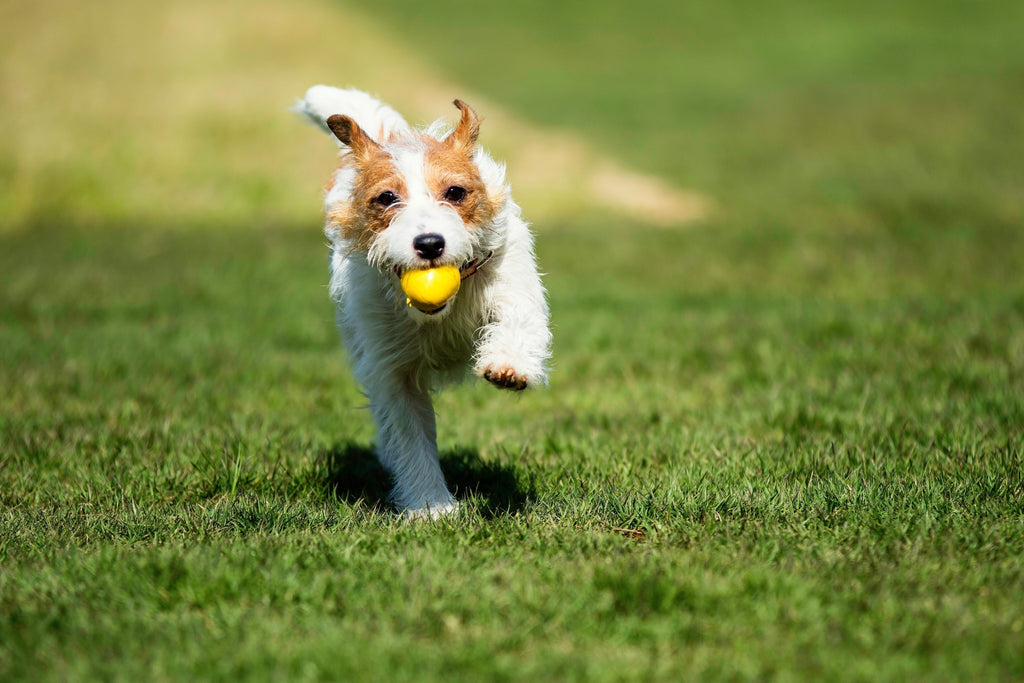Are Dogs Wolves?

As humans, we’ve evolved with dogs by our side. Dogs are humanity’s best friend. The modern dog relies on us hoomans for almost every aspect of their wellbeing, but it wasn’t always this way.
The Shared Ancestry of Wolves and Domestic Dogs
Approximately 33 thousand years ago, scientists can show, through genetics, that our familiar domestic dogs (Canis lupus familiaris) branched off into a new subspecies from their wild ancestors, the grey wolves (Canis lupus). Although dogs and wolves share over 99.9% of their mitochondrial DNA, there are a few significant genetic differences that have evolved with domestication and living alongside humans:
-
Digestion: AMY2B is a gene that helps domestic pups digest starches [1] like those found in sweet potato and rice. Wolves have lower levels of these enzymes, due to their primarily carnivorous diet.
-
Behaviour: Variations in the GTF2I and WBSCR17 genes [2] favour social bonding, reduced aggression and reduced fear of humans in dogs not seen in wolves. These genes are curiously associated with a hypersociable condition in humans.
-
Brain development: Domesticated and wild animals use the Myelin Basic Protein gene differently. This gene helps guide how nerve fibers in the brain are insulated. This might make domestic animals, like dogs, less aggressive and better adapted to living with humans.

Physical Differences Between Wolves and Dogs
There’s a reason why a Shiba Inu is a cute and adorably loveable pet choice, and why wolves are scary, intimidating and just plain dangerous! It’s genetics and domestication.
A Siberian fox domestication experiment conducted by the geneticist Dmitry Belyaev investigated selectively breeding silver foxes for tameness and friendliness toward humans. Over several generations, the foxes began exhibiting certain physical and behavioural traits. A process called “domestication syndrome” is complex [3]. Interestingly, the friendly foxes had traits that made them look more juvenile or cute to humans such as:
-
Floppy ears
-
Curly tails
-
Smaller build
-
Softer vocalisations and increased docility
-
Change in coat colour to white spots or patches
Behavioural Differences Between Wolves and Dogs
Living life close to humans for thousands of years afforded dogs benefits like shelter, consistent food and water. This extended their lifespan, and encouraged traits such as decreased fear, need for proximity and unwavering loyalty that deepened their relationship with human beings.
Dogs are incredibly resilient and adaptable. Ancestral dogs followed humans, and we started to intentionally breed them to suit our needs, such as for protection, work and as companions. Over the years, working dogs have made their way from the outskirts of the campfire, to our back door, right on inside and now 42% of us report that they’re sleeping in our beds.

The Evolution of Nutrition: Wolves Versus Dogs
Despite their evolutionary differences, dogs and wolves still share some core dietary requirements, such as reliance on high quality animal proteins and fats for amino acids and energy, and essential micronutrients. Cohabitation with humans and domestication, has however, caused a slow shift in dogs from wolves.
Wolves are specialised hunters and rely on their predatory carnivorous instincts and natural foraging behaviours to survive.
-
Eating whole prey means wolves will consume not just muscle meat, but organs, bones and stomach contents to provide them, and their microbiota, a complete balance of nutrients.
-
Hunting is exhausting. The physically demanding lifestyle of the wolf encompasses hunting and defending territory, which comes with a higher caloric need. Wolves thus rely on fat reserves and a slower metabolism to conserve energy
-
Irregular feeding patterns means wolves may go days without food if their hunt is unsuccessful. When they do catch that wild deer, wolves will feast and consume large amounts of meat at once. Because of this irregularity in food availability, wolves can handle large, protein-rich meals with longer fasting periods allowing the gut to rest.
-
Shorter lifespans in the wild, typically from 6 to 8 years, means that wolves focus on immediate survival and rapid energy release rather than longevity.
The modern doggo varies from your active sheep station kelpie to your King Charles couch potato. One thing’s for certain though - they rely on us.
-
A broader variety of food options means dogs, and their microbiota, have become accustomed to metabolising starches and carbohydrates more effectively, reducing their dependence on high-fat diets. This evolved through farming, with humans offering dogs what is on our own dinner tables including sweet potato, peas, beef, salmon and parsley.
-
Life is easy and predictable, with lower energy requirements overall. A dog’s diet needs to provide consistent energy without developing large fat reserves.
-
Frequent smaller meals means a dog with a regular feeding schedule will adapt their metabolism to a regular energy intake. They’re still Canis lupus species however, so would be OK out there in the wild if necessary.
-
Forever dogs are living longer, often 10 to 15 years or more depending on the breed. Domestic doggos benefit from diets formulated to support longevity, reduce inflammation, maintain joint health and prevent diseases [4].

Shared Nutritional Needs
Despite their evolutionary and lifestyle differences, dogs and wolves still share some core nutritional requirements. Both thrive on diets rich in quality protein, fats and micronutrients, though wolves obtain these naturally from prey, while dogs rely on balanced, formulated diets and curated fresh foods. Nutrition is a tool we must use to delay aging and provide humanity’s companions with long, happy, healthy lives.
Frequently Asked Questions
Is it true that dogs are just “domesticated wolves”?
Domestication is often oversimplified, but the answer is yes. Dogs are, however, a distinct subspecies and are not just “tame” wolves. They still share over 99.9% of their DNA, so they’re more like cousins than clones.
Are grains bad for dogs?
No, but it’s complicated, so we wrote an article on it: Are Grain-free diets better for dogs?
Should dogs eat raw meat like wolves?
It’s not necessary, but it’s a great idea if you can. We wrote an article on this too: How much food does a dog need on a raw diet?
Can dogs survive on a vegetarian or vegan diet?
It’s tricky. They could survive, but it’s not ideal. Read our article on Can dogs be vegan?
Why do dogs eat grass?
Most dogs eat grass, simply because it’s delicious and fun to do. It can aid digestion, ease nausea and is a great source of fibre.
Why do some dogs howl like wolves?
Howling is an instinctual behaviour inherited from a dog’s wolf ancestor. It’s a form of long-distance communication to rally the pack, signal their location or warn others to stay away. Certain breeds like huskies, malamutes and hounds have a stronger genetic link to wolves and are more likely to hooowwwwwl.
References
[1] Alvarenga, IC et al. Factors affecting digestibility of starches and their implications on adult dog health. Animal Feed Science and Technology, 282 (2021).
[2] Tandon, D et al. Homozygosity for Mobile Element Insertions Associated with WBSCR17 Could Predict Success in Assistance Dog Training Programs. Genes vol. 10,6 439 (2019).
[3] Lord, KA et al. The history of farm foxes undermines the animal domestication syndrome. Trends in Ecology & Evolution. 35 (2) (2020).
[4] TEDXTalks: K Becker. Our co-evolution with dogs. (2018)






